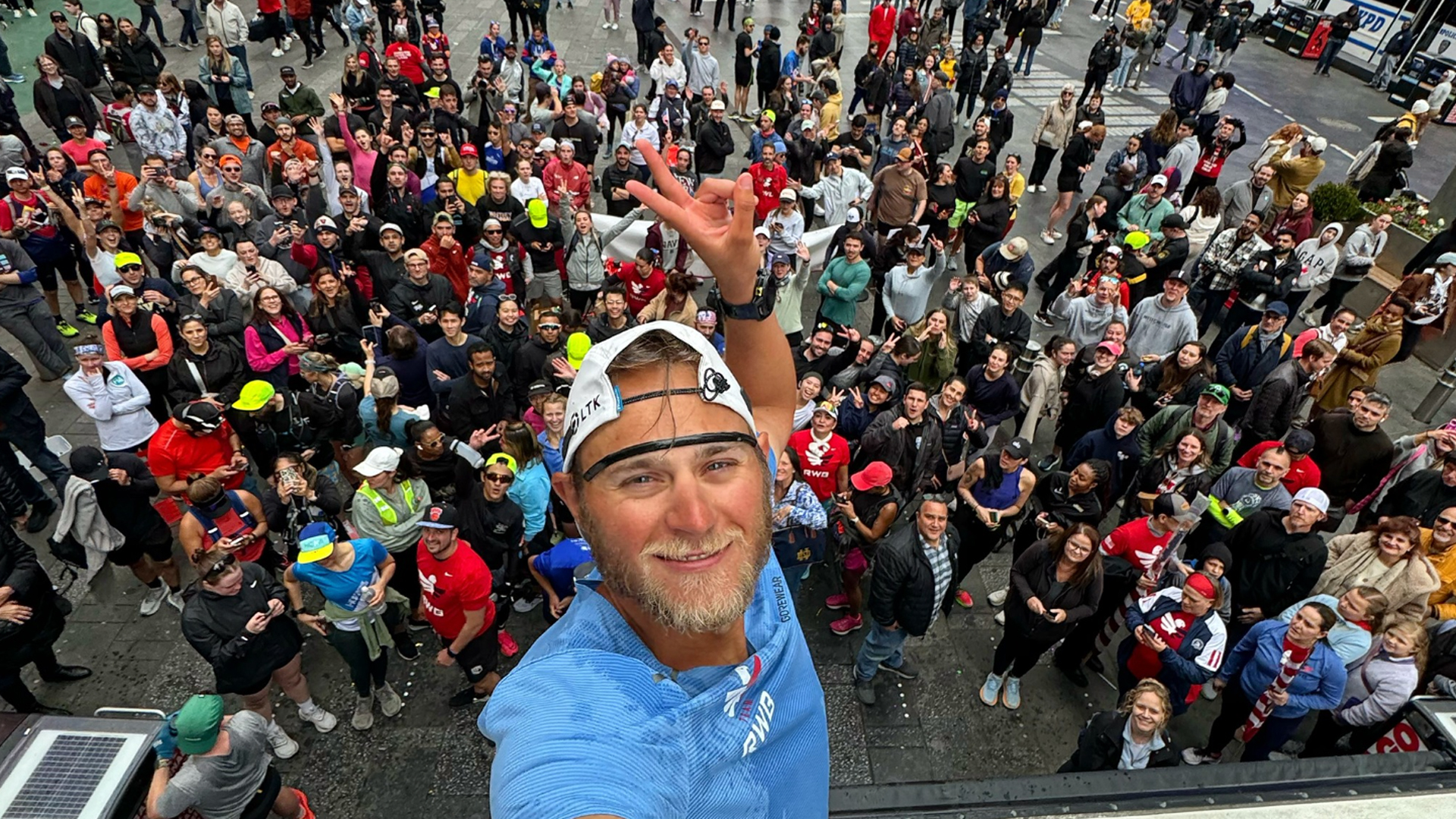

New York City is known as the city that never sleeps, and the traffic alone is a force to reckon with. But when U.S. Navy officer Paul Johnson ran into the city on his final day of a 3,000-mile transcontinental run, the NYPD cleared the city streets of all traffic so he could cross the finish line in Times Square.
“We didn’t see a single car the whole time we were running, which was pretty insane,” Johnson said. They did have a crowd of supporters running alongside him for the last segment though, and many more cheering along the way.
Johnson first set out to break the world record for a transcontinental run and raise $1 million for Team RWB, a non-profit dedicated to helping veterans with their mental and physical well-being. In the end, Johnson and his team raised over half a million dollars but fell short of the world record despite finishing with an elite pace. A documentary covering the whole endeavor will be released later to help raise more funds for Team RWB.
Due to unforeseen weather circumstances and a caloric deficit impossible to recover from, Johnson made the tough decision to abandon his world record attempt pace early on but remained determined to finish the run.
Subscribe to Task & Purpose today. Get the latest military news and culture in your inbox daily.
“We got caught in a 50-mile-per-hour sandstorm with probably about 10 to 20-foot visibility while running in that for an hour or two,” Johnson said. “That really messed up my throat, and I wasn’t able to eat anything or talk, and swallowing hurt. I dealt with those symptoms for about a week and a half.”
But Johnson pushed forward.
Johnson’s crew of veterans and civilians from the ultramarathon community supported him along the way — including his mother, who helped with logistics and logged miles with her son.
“When you’re in the middle of these things as the runner, you are completely helpless. Your life revolves around eat, sleep, run, repeat, and there’s zero time for anything else,” Johnson said. “So having that team to take care of every other single detail of my life like meals, laundry, vehicles, logistics, communication, media — it’s such an essential part. There’s no way that we would have been anywhere even close to being as successful as we were without them.”
Johnson consumed 10,000 to 12,000 calories per day. But with the physical onslaught of completing multiple marathons a day, he could only eat so much at a time. So his crew would bring food to him every 10 to 15 minutes. His favorite meal items were anything potato-related, fruit gushers, and doughnuts.
It wasn’t just calories he was burning. Running multiple marathons a day amplifies wear and tear on running shoes, and Johnson went through several pairs. But food and footwear weren’t the biggest challenges they encountered.
“The toughest part is actually the wind. There were a couple of days in New Mexico and Kansas where there were 40 mile-per-hour sustained headwinds all day long in the cold,” Johnson said. “It just destroys your morale and forward progress, and you’re limping along at a slow walk. I would say the wind and the vehicle issues were some of our biggest problems.”
Despite the physical toll 3,000 miles can take on a body, Johnson said he’s ready to return to duty. Through his two different Garmin watches, he was able to see how his body slowly adapted to the rigorous daily strain.
“By literally the last two weeks of the run, my Garmin is telling me I was in recovery mode even though we’re still doing 60 to 65 miles a day,” Johnson said. ”The body adapted over time, and it became the new normal.”
Johnson is proud of his accomplishments and the team that supported him along the way. He’s even planning on being a crew member for his team’s upcoming ultramarathons.
“We still raised over half a million dollars, the largest amount of money that’s ever been raised for team RWB before. That is a smashing success in our book. It’s the same thing with the record. I know I can run across the U.S.,” Johnson said. “It’s just a matter of how fast. We finished in 51 days and three hours, and that is up there with some of the fastest crossings of the US on foot. We didn’t hit goals, but we still were very successful in what we set out to do.”
Bravo, Paul Johnson.
The latest on Task & Purpose
- 75th Ranger Regiment sweeps Best Ranger, Best Mortar, and International Sniper competitions
- Married Army couple win back-to-back Sapper school awards
- Special Forces engineers are training to dig ditches and destroy tanks
- This is why Marines were at Mar-a-Lago
- Supreme Court sides with Army veteran in overlapping GI Bill benefits case